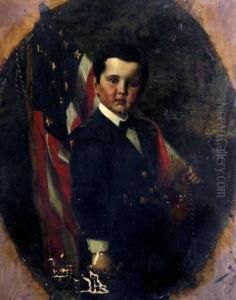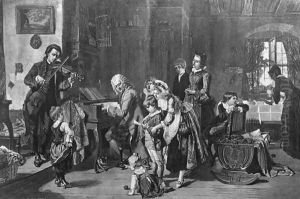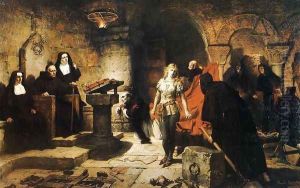Toby Edward Rosenthal Paintings
Toby Edward Rosenthal was an American painter born on March 15, 1848, in New Haven, Connecticut. His family moved to San Francisco in 1858, where his artistic talents were nurtured. Recognizing his potential, local patrons in San Francisco sponsored his education in Europe. Thus, at a young age, Rosenthal embarked on a journey to Munich, Germany, which was a major center for art and culture in the 19th century. He studied at the Royal Academy of Fine Arts in Munich under the guidance of Karl von Piloty, a leading figure in the German academic art scene. Under Piloty's mentorship, Rosenthal honed his skills in historical painting, which became his genre of choice.
Rosenthal's work is characterized by its meticulous detail, vibrant color palette, and emphasis on historical accuracy. His paintings often depicted scenes from European history with a romantic flair, capturing the imagination of viewers. One of his most famous works is 'Elaine,' a painting based on Alfred Lord Tennyson's poem 'The Lady of Shalott.' This piece, showcasing Rosenthal's skill in portraying medieval themes, gained him international acclaim and solidified his reputation as a master of historical painting.
During his career, Rosenthal spent much of his time in Munich, though he frequently traveled to the United States to exhibit his work. His paintings were well-received on both continents, and he enjoyed the patronage of wealthy American and European collectors. Despite his success abroad, Rosenthal always maintained a connection to his American roots, contributing to the cultural exchange between the United States and Europe during the late 19th and early 20th centuries.
Toby Edward Rosenthal's legacy as an artist lies in his contribution to the genre of historical painting. His ability to bring historical scenes to life with realism and emotional depth made him a significant figure in the art world of his time. Rosenthal passed away on December 23, 1917, in Munich, but his works continue to be admired for their artistic merit and historical significance. Through his paintings, Rosenthal left a lasting impression on the art world, bridging the gap between American and European artistic traditions.
















